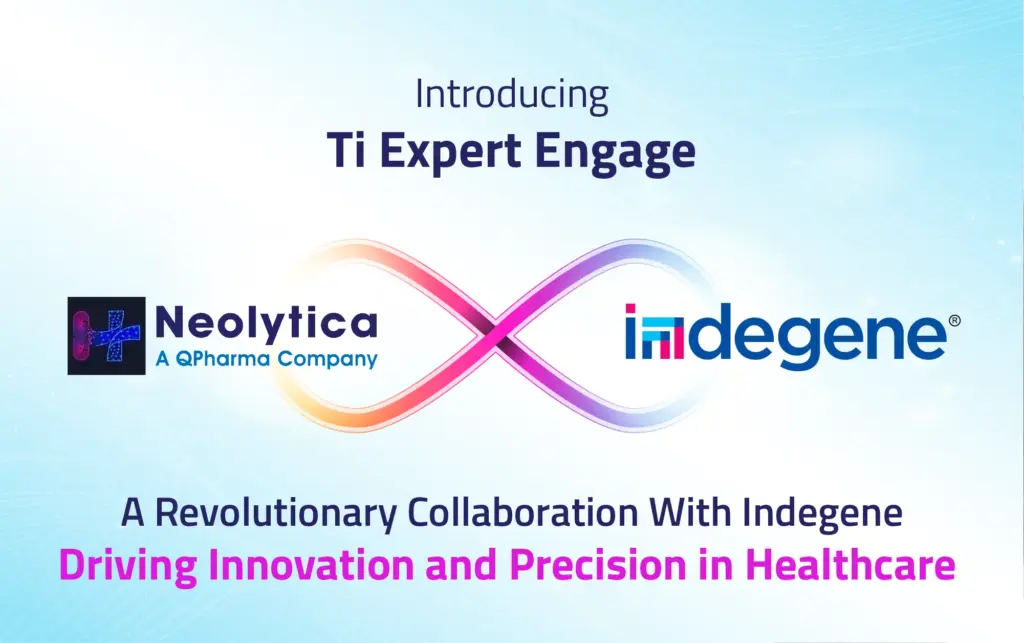Transforming KOL/HCP
insights into impact
Driving success with customized insights and Next Best Actions.

25 Years of Data Science Excellence
Key Differentiators
Personalized Solution vs Generic Database
In the 21st Century, can pharma afford to opt for a syndicated database providing the same KOL lists to competitors?


Impact Measurement for Medical Affairs and Marketing
Multiple teams and stakeholders on a single platform with compliant firewalls
Uniting Medical Affairs and Marketing, our platform balances collaboration with compliance, enforced by a strict firewall


My Insights: Next Best Action & Next Best Expert
Understanding Sentiment Changes and Turning Insights into the Next Best Action
Unique expertise in Rare Diseases with Innovative Solutions


Focus on local HCPs along with national KOLs in marketing & medical strategy.
Identify Regional community leaders and Local influential clinical HCPs and Study their local influence
Ti Expert
This technology and consulting solution brings comprehensive access to data about highly qualified and validated medical professionals, including professional spheres of influence, social relationships, and promotional activities. It maximizes the effectiveness of KOL engagement through:


NotifyMe
A healthcare KOL engagement service with email alerts. An application that enables enterprise-scale social listening and provides actionable alerts on healthcare stakeholders in a desired therapeutic area. It provides snapshots of latest and upcoming information on KOLs of interest.
Solutions

Medical Affairs
Neolytica has been playing a vital role in Biopharma companies by acting as the linking puzzle piece between the R&D and commercial side of business.

Commercial Marketing
Neolytica services help identify and connect with right opinion leaders in the industry to engage HCPs.
Market Access
Market Access has become a key piece in the drug development puzzle in today’s ever evolving market.
Commercial Sales
Neolytica helps you analyze Rx data and referral pattern – missing puzzle pieces in your HCPs approach strategy.
Testimonials
Neolytica’s AI-driven approach has been crucial for my brand to identify which top 10% of key opinion leaders and community influencers impact 60% of my target demographics
Sr. Medical Director
One of the top 5 Pharma Company
Neolytica’s TI Expert solutions has provided invaluable insights and streamlined our commercial activities.
Director TLL
One of the emerging Oncology Company
Neolytica’s platform has transformed our KOL engagement. The interface is user-friendly and provides us with robust data. It’s an invaluable tool for our team.
VP Medical Affairs
Emerging Oncology Company
Amazing platform! The sentiment analysis and segmentation features are beyond
helpful for my executive meetings. Having the ability to garner insights and opinions
of EEs all in one place saves so much time for my whole team.
TLL Director
One of the top 5 Pharma Company
I am very impressed that Neolytica can capture DOLs in this fashion and I was really
surprised that they could monitor social media sites, like Weibo, in China.
Head of Customer Engagement
Leading Pharma Company in women’s Health
No other platform can provide this kind of robust data and detailed information about
our KOLs. This knowledge and insight allows us a high level of productivity with our
KOL engagement.
Head, Field Medical Excellence
One of the top 5 Pharma Company
This platform is amazing! And this is exactly what I wanted to know – the opinions of
KOLs on sentiment topics over the years. Sentiment Analysis and Segmentation
features are awesome, and I wanted this kind of analysis for my Executive meetings
Executive Director Medical
One of the top 5 Global Pharma Company
Neolytica’s platform is quite comprehensive as it includes local community analysis
i.e. HCP targeting along with KOL mapping and it gives the whole picture of influence
from top KOLs to community leaders
MSL Director
One of the top 5 Global Pharma Company
The platform serves as a comprehensive resource to stay updated on your KOLs’
activities bi-weekly. These updates will give you deeper insights into the KOLs’
perspectives or “sentiments,” highlight opportunities for potential interactions and
offer excellent conversation starters based on their activities and interests
Executive Director Medical
Leading Neurology Company
Testimonials

Sr. Medical Director
One of the top 5 Pharma Company

Neolytica’s TI Expert solutions has provided invaluable insights and streamlined our commercial activities.
Director TLL
One of the emerging Oncology Company

VP Medical Affairs
Emerging Oncology Company

Amazing platform! The sentiment analysis and segmentation features are beyond helpful for my executive meetings. Having the ability to garner insights and opinions of EEs all in one place saves so much time for my whole team.
TLL Director
One of the top 5 Pharma Company

Head of Customer Engagement
Leading Pharma Company in women’s Health

Head, Field Medical Excellence
One of the top 5 Global Pharma Company

Executive Director Medical
One of the top 5 Global Pharma Company

MSL Director
One of the top 5 Global Pharma Company

Executive Director Medical
Leading Neurology Company


